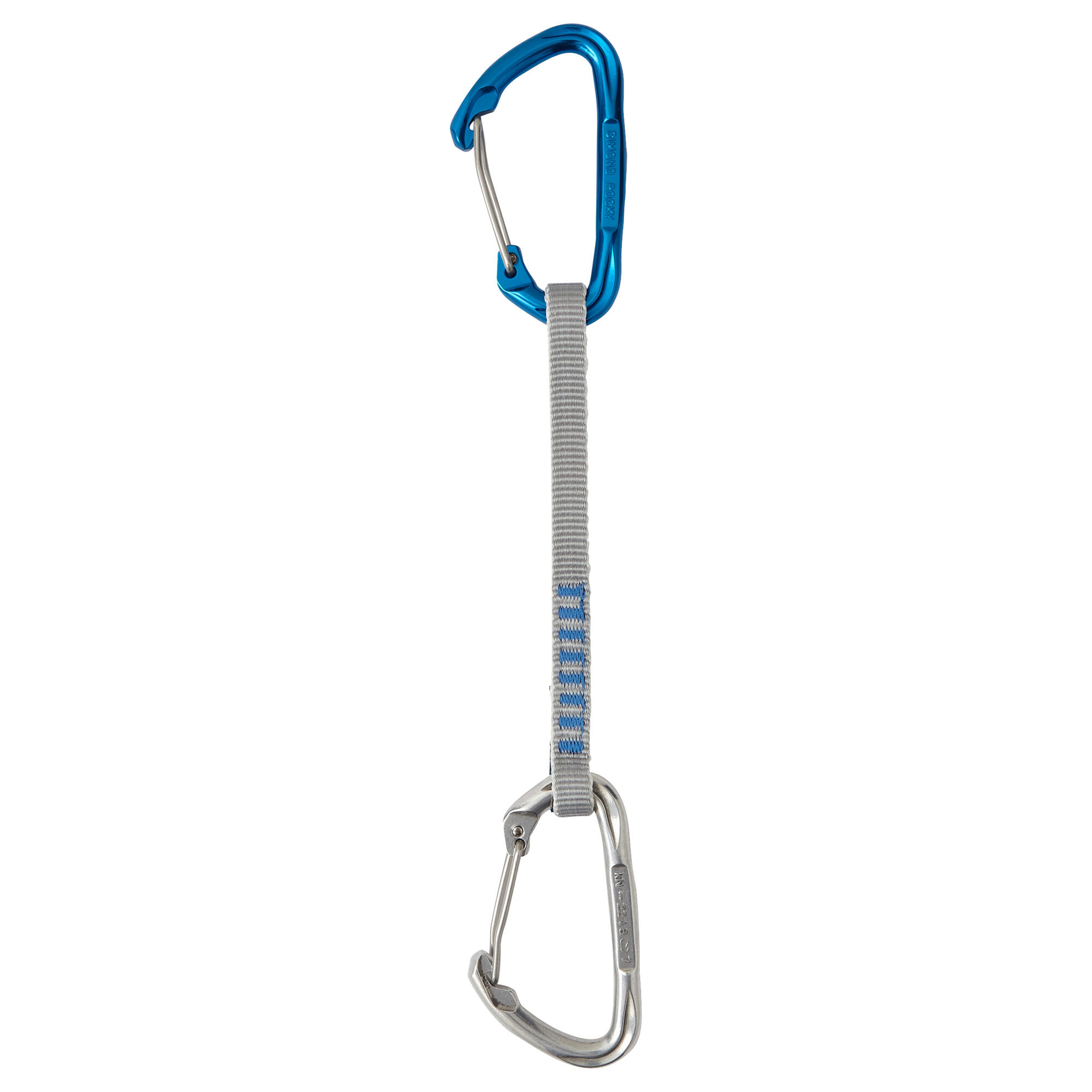
However they wear out quite quickly and often need replacing. External rubber retainers work well on holding the krab and they usually allow some flex of the lower part of the sling which is useful to reduce the (very small) possibility that a twisted quickdraw may unclip itself. Over the years there have been several different solutions to this problem but, as yet, no-one has come up with a fully satisfactory solution. Most of the quickdraws use some sort of retainer system to hold the lower krab in position so that you avoid the problems of upside down krab clipping. This is sometimes done in the forging process, or by use of a shielding bar. The term 'clean nose' refers to the closing hook on the krab being shielded by some system to prevent rope, tape or wire getting snagged in the nose hook when clipping. It is worth noting that you should closely inspect your wiregates regularly to ensure that the wire still snags on the hook otherwise you will be operating a quickdraw with a gate-open strength of 7kN - a level that can be easily acheived in a high fall factor.
Climbing quickdraw plus#
A plus factor of wiregates is that they are less prone to freezing up when winter climbing.

This can make them stiffer than solid gates, although most manufacturers have managed to balance this correctly nowadays. The spring in the krab comes from the twisting action on the wire itself.
/GettyImages-510303506-58a8d5e13df78c345b55d076.jpg)

Most are the conventional looped 'paperclip' style wiregate which catches on a hook to give the gate closed strength. Those wanting a little more security, or quickdraws that can double up for sport climbing, may want to look at more substantial quickdraws with a gate-open strength of nearer 9kN.Īll the krabs featured here have wiregates which are lighter than solid gates. This is about the minimum value acceptable and krabs have been known to fail at this level with a high fall factor ( fall factor explained here). This enables strength with lightness to be acheived although there is a trade off and the gate-open strength for most of the krabs in this review is only 7kN. Most of the krabs are hot-forged, which allows manufacturers to move metal from areas of natural strength (such as the krab's back bar) to areas of natural weakness (the corners/angles). Some are better suited as all-rounders and, although we have mentioned this, the review is aimed at people wanting a specific lightweight trad quickdraw option. We have considered them based on their lightweight trad attributes. We have also looked at the connecting slings, what lengths they are available in and the method used for retaining the lower krab so that it doesn't flip upside down. We have considered how they handle and what sort of gate and action they have. In this review we have looked mainly at lightweight offerings from the major manufacturers. So the key attribute for a specialised trad quickdraw is that it should be light and this is usually done at the expense of durability and in some cases a small reduction in gate-open strength. When sport redpointing, quickdraws are rarely even carried on the important ascent, yet trad draws need to be racked up every time, and often plenty of them. A trad draw, on the other hand, may go months or even years before seeing a single fall.
A sport draw will see falls, it will get sat on and it will get pulled on. The main assumption made when designating a quickdraw as a 'trad quickdraw' instead of a 'sport quickdraw' is lightness being favoured over durability.


 0 kommentar(er)
0 kommentar(er)
